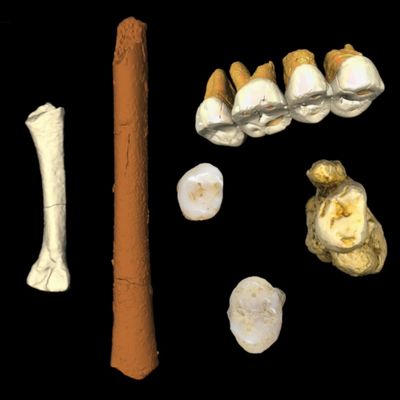
Homo sapiens, meet Homo luzonensis.
Researchers announced the newly discovered ancient human species this week. The unveiling of Homo luzonensis came 12 years after 13 bones were first discovered on an island in the Philippines. Thought to have lived somewhere between 50,000 to 67,000 years ago, Homo luzonensis was probably under four feet tall and seems to have enjoyed spending time in trees.
The species is named after Luzon, the large Philippines island on which it was discovered. The first bones of this early human cousin were dug up in 2007. Researchers made return trips in 2010 and 2015, discovering toe bones, finger bones, part of a femur, and seven teeth. Then they spent years studying the bones, eventually determining that they came from a creature unlike anything else they’d ever seen.
“These specimens display a combination of primitive and derived morphological features that is different from the combination of features found in other species in the genus Homo (including Homo floresiensis and Homo sapiens) and warrants their attribution to a new species, which we name Homo luzonensis,” says the abstract from their research, published this week in Nature.
This discovery marks the fourth time in the past 15 years that a distinct human relative has been identified, the Washington Post reports:
Homo floresiensis, so small it was nicknamed “the hobbit,” was found in Indonesia in 2004. Mysterious Denisovans, identified as a species based on a finger bone in 2010, lived in Siberia. Homo naledi skeletons, with strange mixes of modern and primitive features, were pulled out of an African cave in 2013.
Researchers are unsure how the Homo luzonensis could have reached the island, with some suggesting that storms may have swept them to Luzon. In that isolated environment, they may have evolved into a smaller species than Homo sapiens and Homo neanderthalensis, which walked the earth at the same time. Rick Potts, director of the Smithsonian’s Human Origins Program, told NPR that the one thing this new discovery makes clear is that, the more we learn about the history of our species, the stranger it all gets. “The evolution of Homo is getting weirder and weirder,” he said.





























